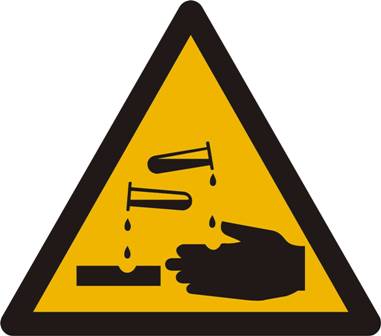Topics 8 & 18
 Topics 8 (
Topics 8 (
 6.5 h) & 18 (
6.5 h) & 18 ( 10 h) : Acids and bases
10 h) : Acids and bases
Introduction
 Topics 8 and 18 follow on neatly from Topics 7 & 17 as much of Acids and bases concerns equilibrium in aqueous solution. Since students will already have come across some classic acid-base reactions I usually start with these and do some introductory practical work before discussing the theories involving proton transfer (not Lewis) which are covered in the first sub-topic. Clearly the topic lends itself to much practical work including titrations, test-tube reactions, the use of data loggers and pH probes etc. and simulations. Because measurements are easily made many of the practicals lend themselves to scaffolding in preparation for the internally assessed individual scientific investigation. There are two mandatory areas of practical work covered in this topic. These are sub-topic 8.2. 'Candidates should have experience of acid-base titrations with different indicators' and sub-topic 8.3. 'Students should be familiar with the use of a pH meter and universal indicator'. Suggestions for experiments to cover these include Acid-base titrations, A green acid-base practical, Analysis of aspirin tablets, CaCO3 in egg shells and Titrations with a pH meter.
Topics 8 and 18 follow on neatly from Topics 7 & 17 as much of Acids and bases concerns equilibrium in aqueous solution. Since students will already have come across some classic acid-base reactions I usually start with these and do some introductory practical work before discussing the theories involving proton transfer (not Lewis) which are covered in the first sub-topic. Clearly the topic lends itself to much practical work including titrations, test-tube reactions, the use of data loggers and pH probes etc. and simulations. Because measurements are easily made many of the practicals lend themselves to scaffolding in preparation for the internally assessed individual scientific investigation. There are two mandatory areas of practical work covered in this topic. These are sub-topic 8.2. 'Candidates should have experience of acid-base titrations with different indicators' and sub-topic 8.3. 'Students should be familiar with the use of a pH meter and universal indicator'. Suggestions for experiments to cover these include Acid-base titrations, A green acid-base practical, Analysis of aspirin tablets, CaCO3 in egg shells and Titrations with a pH meter.
Some points to consider
Students should be able to recall the characteristic properties of acids and bases and you should give them plenty of practice at writing equations for the reactions of acids with hydroxides, oxides, carbonates, hydrogencarbonates and other bases such as ammonia as well as reactive metals. (If you do Option D : Medicinal chemistry this is very useful for D.4 on pH regulation of the stomach.) The distinction between strong and weak acids is covered and this emphasises the importance of language as students should be able to distinguish between the words “strong”, “concentrated” and “corrosive” when applied to an acid. The concept of the pH scale is included and at both Standard and Higher Level calculations involving the formula pH = − log10[H+(aq)] are now required. At both levels students also need to understand the use of indicators and pH meters in titrations. At Higher Level more types of calculations are required including the manipulation of logarithms for pH, pOH, Ka, Kb, pKa and pKb calculations (but not buffer calculations as these now only appear at Higher Level in Option B : Biochemistry under Proteins and Enzymes and at both Higher and Standard Level in Option D : Medicinal chemistry which specifically mentions the Henderson–Hasselbalch equation in the core topic D.4 on pH regulation of the stomach). For this reason I usually leave teaching Acids and bases until the second year of the course when they should be more able to cope with the mathematics. However, as with Equilibrium calculations, they are not expected to solve quadratic equations but use approximations instead. At Higher Level Lewis theory is introduced and extended to cover 'curly arrows' in organic reaction mechanisms . At both levels the sub-topic 8.5 deals with Acid deposition. This is effectively 'utilization' but, as it is clearly a sub-topic in its own right, it is assessable.
The links on the left give you teaching tips etc. for each of the sub-topics together with questions and answers for each sub-topic.
Once you have finished teaching the whole topic you can give the multiple choice tests on Acids and bases (together with answers):

 IB Docs (2) Team
IB Docs (2) Team